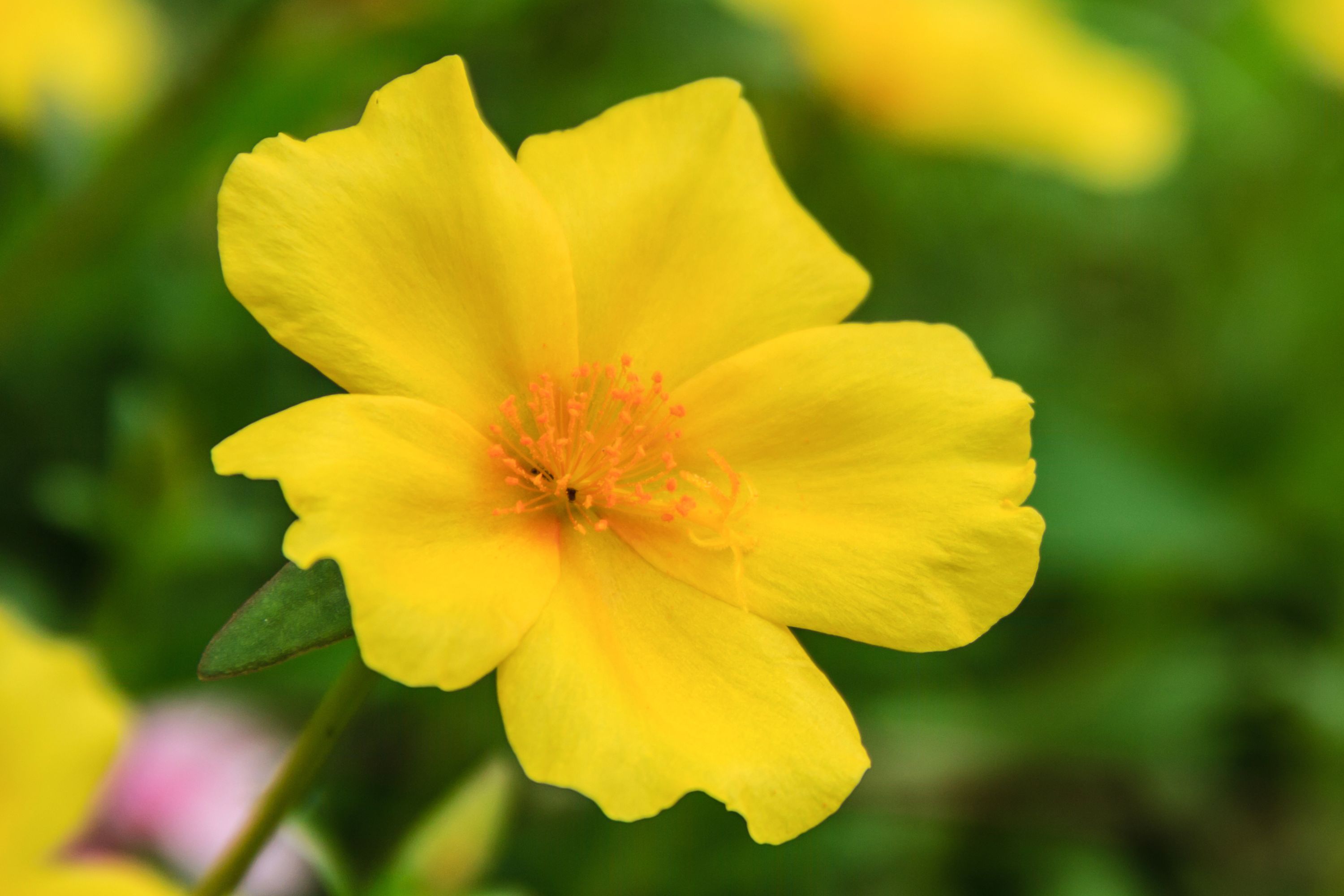Wingpod purslane
(Portulaca umbraticola)

Description
Portulaca umbraticola, also known as desert purslane or moss rose, is a succulent plant species that belongs to the Portulacaceae family. It is native to the desert regions of North America, including Mexico, the southwestern United States, and parts of Central America. In this blog, we will explore the characteristics, growth habits, care requirements, and uses of Portulaca umbraticola in more detail. Taxonomy and Nomenclature The scientific name of Portulaca umbraticola is derived from the Latin words "portula" meaning "little door," and "umbraticus" meaning "of shady places." It was first described by the botanist Nathaniel Lord Britton in 1891. The common names, desert purslane, and moss rose, are a reference to the plant's ability to grow in hot, arid conditions and its rose-like flowers, respectively. Characteristics Portulaca umbraticola is a low-growing succulent that forms a mat-like growth habit. It has a shallow, spreading root system and grows to a height of 6 to 12 inches. The stems are thin and fleshy, with small, oval-shaped leaves that are arranged alternately along the stem. The leaves are usually about 1 inch long and 0.5 inches wide, and they are green to gray-green in color. Portulaca umbraticola is known for its bright, showy flowers, which bloom from spring through fall. The flowers are typically 1 to 1.5 inches wide and have five petals that are arranged in a rosette. The petals can be found in shades of pink, red, orange, yellow, white, and purple. The flowers open in the morning and close at night, and they can attract bees, butterflies, and other pollinators. Growing Conditions Portulaca umbraticola is a hardy plant that is well adapted to growing in hot, dry climates. It is tolerant of poor soils, drought, and high temperatures, and it can thrive in full sun or partial shade. In fact, it is often used as a ground cover in arid regions, as it can help to reduce erosion and conserve moisture in the soil. Propagation Portulaca umbraticola can be propagated by seed or by stem cuttings. Seeds can be sown directly in the soil in the spring or summer, and they should be covered lightly with soil. The seeds will germinate in 7 to 10 days, and the seedlings can be thinned to a spacing of 6 to 8 inches apart. To propagate by stem cuttings, take a cutting that is about 2 to 3 inches long and remove the lower leaves. Dip the cut end in rooting hormone and plant the cutting in well-draining soil. Water the cutting sparingly until it roots, which can take up to four weeks. Care Requirements Portulaca umbraticola is a low-maintenance plant that requires very little care once established. It is drought-tolerant and can survive long periods without water, but it will perform best if it is watered occasionally during hot, dry weather. Overwatering can cause the roots to rot, so it is important to allow the soil to dry out between waterings. Portulaca umbraticola does not require fertilization, but a light application of a balanced fertilizer in the spring can help to promote growth and flowering. It is also important to remove any dead or damaged stems and leaves as they occur to prevent the plant from becoming overcrowded and to promote new growth. Uses Portulaca umbraticola has several common uses. Here are some of the most common uses of this plant: Ornamental Use: Portulaca umbraticola is often grown as an ornamental plant in gardens, rock gardens, and containers. It is valued for its bright, showy flowers that bloom from spring through fall. It is an excellent choice for adding color to a hot, dry garden or landscape. Medicinal Use: In traditional medicine, Portulaca umbraticola has been used to treat a variety of ailments, including digestive problems, skin conditions, and respiratory infections. The plant contains several compounds that have anti-inflammatory, antimicrobial, and antioxidant properties. Culinary Use: The leaves and stems of Portulaca umbraticola are edible and can be used in salads, soups, and stir-fry dishes. The plant has a slightly sour taste and is often used as a substitute for spinach or sorrel. Erosion Control: Portulaca umbraticola is often used for erosion control in arid regions. Its shallow, spreading root system helps to stabilize the soil and prevent erosion, while its ability to tolerate drought makes it a good choice for planting in dry, rocky areas. Green Roofing: Portulaca umbraticola is also a popular plant for green roofing. Its low-growing habit, shallow root system, and drought tolerance make it well-suited for growing on rooftops, where water retention and weight restrictions are a concern. In summary, Portulaca umbraticola is a versatile plant that has a variety of uses, from ornamental to medicinal to culinary. It is a hardy, low-maintenance plant that can thrive in hot, dry climates, making it an excellent choice for gardens, erosion control, and green roofing projects.
Taxonomic tree:







